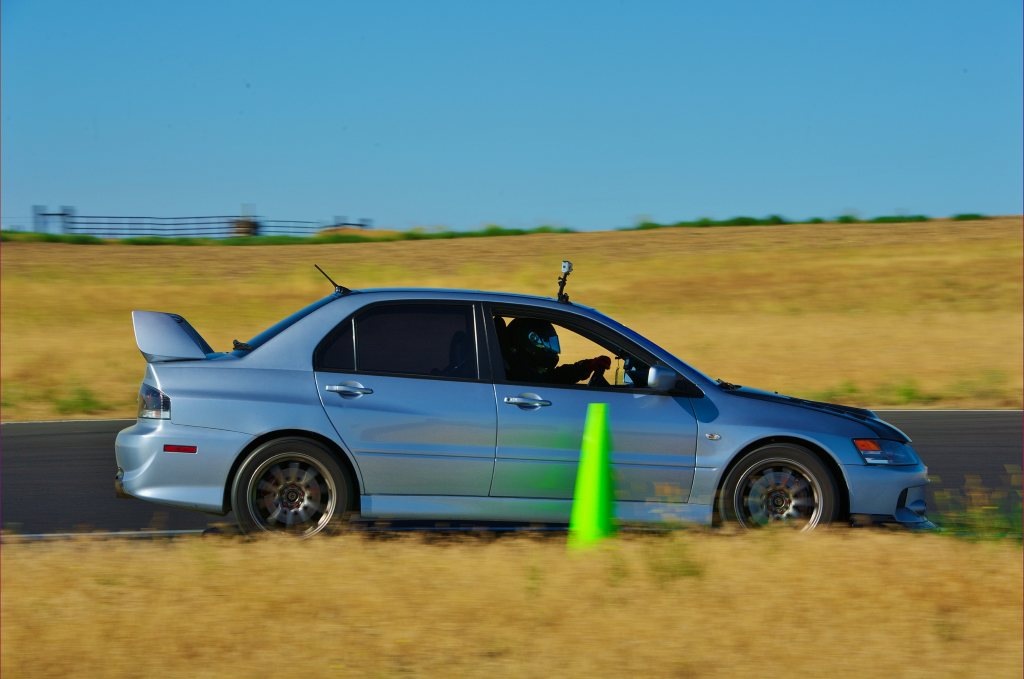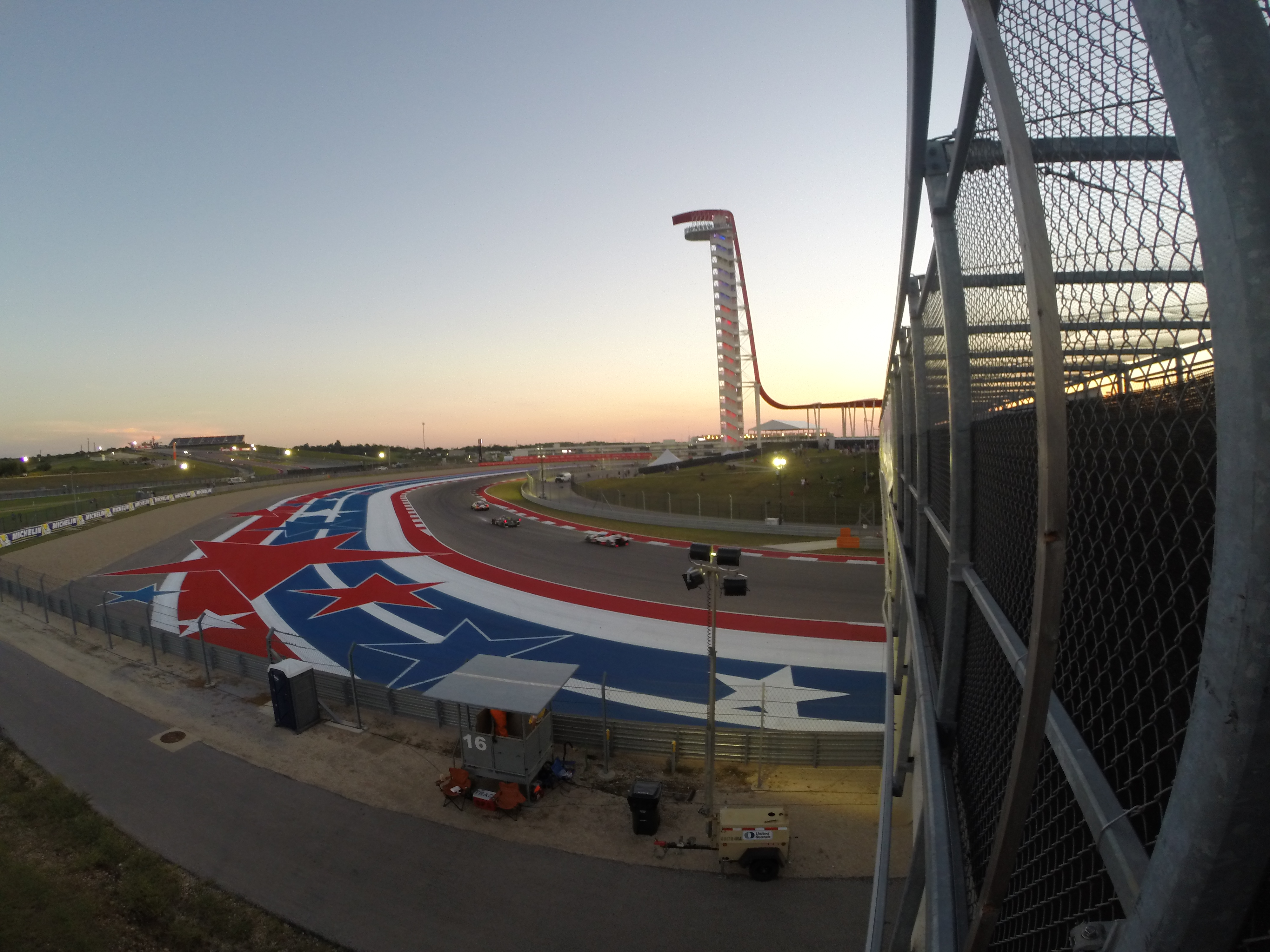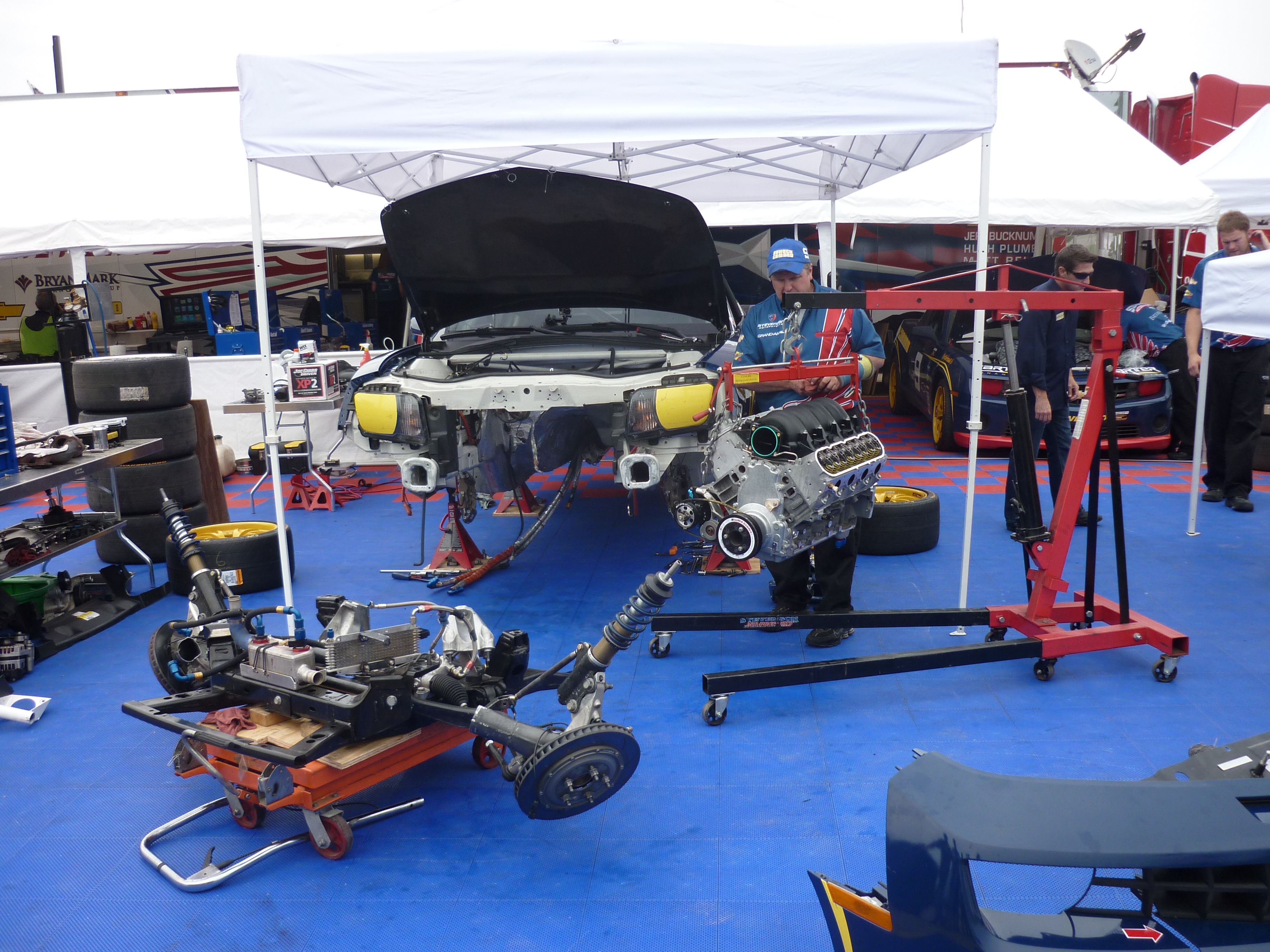
What: The very first time I crashed, which happened to be an HPDE road trip/event.
If I knew then, what I know now:
- I would have actively sought out training on how to handle “going off track.” Going off track is not a bad thing inherently and will happen. Handling it properly would have saved me a ton of money.
- Had a HANS or NecksGen device: the impact was a classic sudden forward neck movement, with a concrete wall.
- Reinforced that in motorsports, even recreational – if you’re competitive (I am) it’s not if you will crash, but when you will crash. How are you going to move forward?
Things you should check out:
- A Head and Neck Device, such as a HANS Sport II Device for SA Helmets
or NecksGen Neck Brace
- A solid towing benefit in your car insurance
- Track Day insurance (maybe)
The car: 2006 Mitsubishi Lancer Evolution 9 GSR
This car, was technically, my wife’s car. A few years prior, I had decided it was time to get back into ‘car game’. It was about 3-4 years from when I had graduated from college, had paid off my student loans and bought a house. Prior to college and for some time in college, I was active in ‘modifying’ street cars. But after several cars, experiments, blown engines and essentially sunk money, I bought a 1999 Ford Contour SVT (black), which had an aftermarket exhaust, broken sun-roof and called it good. So I thought.
Fast forward to 2011 and we had a heavily modified (and unnecessarily) 2008 Subaru WRX STi (mine) and a 2006 Mitsubishi Lancer Evolution GSR (my wife’s).




I slowly took over the Evo because I had gone too far with the STi, making it not track-capable. With an upgraded turbo and 400whp, it was too much car for to handle and very likely wouldn’t make it a day or two without over-heating or blowing up as EJ25 engines were and are notorious for not liking even mild track sessions.
I’ll be writing a car profile post and update this article later on, but in terms of specs, it had the basic bolt-on’s, a tune by Cobb Tuning, a harness bar, some gauges, upgraded brakes (lines, pads and rotors) and I removed the rear seats for “weight reduction.” 😆 Functionally, it allowed space to bring alone a full set of track tires/wheels, a jack, jack-stands and pretty much everything I needed for a track day.
My experience thus far: Intermediate run group, on the cusp of Advance
This was the first year that I had decided I was done with simply modifying cars and hard-parking. I had taken an HPDE full-day event the prior November and the bug had bit. I had spent that entire spring and summer, attending track days and this was also the first year a friend and I had started developing Track Attack. Each time we went out on-track, it was not only fun but a chance to test and improve Track Attack.
At the time, I had somewhere around 8-10 track days, without any real incident; a spin here and there. Generally, I felt quite ‘seasoned’ by the time this trip came around but by no-means did I feel fast. I had also done a couple autocross events and had decided that was not my path. Nothing wrong with Autocross but all that standing around, with no practice runs and for at most 4 under 60 second runs (of which I sucked at all of them) – I was OK sticking with track days. 🙂
The setting: A three-day track day road trip (Portland International Raceways and Oregon Raceway Park)
Most of my track days were with either ProFormance Racing School or The Ridge Racing School (now the majority of their events run by Turn 2 Lapping). Each year, ProFormance racing school would organize a ‘road trip’, hitting Portland International Raceways for two days and Oregon Raceway Park for another two days (Thursday through Sunday).
I was excited and intimidated a little about Portland, mainly because it had the ‘International’ in the name – implying, at least in my head, the more professional and potentially hard aspect of the track.



The first two days at Portland went great! I had hired an instructor for the first day at each track, to help guide me through the track as it was my first time at each. At the end of the day on Friday, we caravaned over the mountain range. I stayed with a friend (Robert) I had made in my modifying days, that was a Shop and History (I think) teacher, in The Dalles, OR. He was/is a big car guy and had just gotten into Evo’s and was gracious enough to let me stay at his house.
That first day went really well and aside from frustrations with the Track Attack app (no cell phone reception at all) was ready to get back to the track and make some serious gains on my lap times. That Sunday morning, Robert came out in the AM and we were able to give parade rides, which was fun to show him around the track. Once he left, it was time to get back on it.
What happened
It was what would have been the second to last session of the day. I forget my exact lap times, but I want to say they were in the 2:10-2:15 range, of which looking back on it now, is well below the abilities of that car. I honestly don’t recall having too much of a structured learning or driver development plan, so I was pretty much just lapping around “trying to go faster” but no real thing I was actively or consciously working on.
Oregon Raceway Park is an incredible track, with lots of rolling hills, blind corner exits and no real long straightaway, giving little time for brakes to cool down or a rest for the driver. It is ran primarily in the clock-wise direction, though it is regularly run counter-clockwise. It’s out in the middle of nowhere, high central desert, Oregon, where if you go off, there really isn’t anything to hit. Generally, go off, pick up small rocks and dust – come back into the paddock, clean and vacuum your car and you’re back at it.
Except one section: Start/Finish main straight with a wall
Check out this video of one of the best club racers (and drivers in general), Cody Smith in a race at ORP. You’ll see that right at the last corner, there is a wall that protects the hot-pits. The only real place to get in trouble here is that wall and that’s what I learned.
You see what happened at 2:32 mark? That’s exactly what happened to me.
On what would end up being my last lap for that weekend, I was coming up on the final turn, I braked, turned but turned in too early and probably too lazily. As I started exiting the corner, was on throttle but noticed I was going to run out of road and I lifted. 🙁
Off-Throttle Oversteer: Engaged
Not sure if the car actually dropped a tire but the rear end whipped around and next thing you know, I am sitting there, staring at a wall and corner workers running over to me. I then look to my left to see if any other car is going to collect me and this awesome green E36 M3 purposefully goes off-track, along with a nice 370z. No damage to them, aside from a dusty car.
Within 10 minutes, I’m out of the car, physically fine and am able to limp the car back to the paddock, where front end is pushed in a few inches, the Seibon carbon fiber hood latch is broken but that’s about it. If it weren’t for the leaking radiator, I might have even tried to drive it home.
The aftermath
First, I have to thank Don Kitch Jr on how calmly he handled himself (not having been his first rodeo by a lot) as that helped calm me down. I had recently started working with English Racing, in Camas, WA and made the call to see if I could have the car towed to their shop, so they could take over assessing and fixing the car.
I also called my insurance and told them I had run into a mechanical issue while on a road trip and needed a tow truck. With no approved partner within 100 miles, they allowed me to use the local tow truck provider (a story for another time) and I had the car towed to English Racing, with me going along for the ride. Myles Kerr (Gringo Integra) was incredibly awesome, meeting me at the shop (I think they were actually there anyway) and giving me a ride to the local airport, where I picked up a rental car and drove home.
At the end of the day, the damage wasn’t bad at all and the learnings were great. The majority of the front end needed to be replaced (front bumper cover, lower lip, radiator support, radiator, intercooler, headlights [I think]). The rest of the body parts were repairable and while it was at a body shop, I had the body shop massage all of the fenders so I could easily fit the 275/45/17 rubber I was running without rubbing and had English do a full mechanical evaluation, tune-up, install a new TRE rear differential, bigger injectors, new fuel pump and a new tune, bringing the power to 334whp and 276ft/lb torque.
The Dark Side
I’m not gonna lie, I had some dark thoughts in the first 24-36 hours after the incident. Even before I got out of the car, staring at the wall, I thought to myself – “What the hell am I doing? This isn’t for me. I’m not good at this and I can’t afford this. Did I just financially ruin us?”
The scariest thoughts were those “this isn’t for me and I’m not good at this” thoughts. I had already heard from Don and other experienced drivers that crashing on-track isn’t a question of “if but when” it will happen. And multiple “when’s.”
Luckily (or maybe not), I’ve had a history of dealing with thinking and being told that certain things weren’t for me and that I sucked at them. In most cases, I’ve been stubborn and hard working enough to prove others and myself wrong. So it took some time, but I consciously decided that this incident would not hold me back. Motorsports and specifically, being the best driver I could possibly be was something I wanted to be a significant part of my life. So I picked myself up, dusted off, fixed my car and got back it.

















